Abstract
Background: Clinical training, supervision and practice are the most important aspects of health profession education, including optometry. Institutions implore various methods for students to gain access, exposure and experience in different clinical environments, away from their normal academic settings.
Aim: This review aimed to investigate studies and related documentary evidence to determine existing standards and methods for educational institutions in conducting optometry clinical training at the external sites.
Setting: The electronic databases – ProQuest One, Scopus, EBSCOhost, Sabinet, Science Direct and Google Scholar – were searched systematically for studies on the implementation of workplace clinical training of undergraduate optometry students.
Methods: The study followed the Joanna Briggs Institute (JBI) systematic review methodology and a systematic search of various electronic databases was conducted for studies on implementation of workplace clinical training. Of the 450 full-text studies searched, 13 studies were found to be reputable sources of evidence and were included in this systematic review.
Results: Four themes relating to student clinical training emerged, namely, clinical training approaches implemented, expected minimum standards at the training sites, clinical training environment wherein students and supervisors find themselves and clinical competence of the supervisors and students. They encompass important factors to consider in the planning and provision of quality, efficient and effective student clinical supervision at the external training facilities.
Conclusion: There is a dearth of scholarly studies to guide clinical training of optometry training within the public health sector. However, more studies are undertaken in other health disciplines, and they provide generic guidelines, which can be adapted for optometry.
Contribution: The article highlights the need for further studies in optometry student clinical training, focussing on programme designs and standardisation of clinical training in multi-institutional, low-income contexts.
Keywords: clinical supervision; optometry; student clinical practice standards; student clinical training; student clinical training facilities.
Introduction
Clinical education and training, supervision by experienced clinicians and exposure to patients presenting with a diverse range of anomalies or diseases are fundamental for students in health professions education. Clinical training provides students an opportunity to transfer theoretical knowledge gained within academic settings into real-life practice settings Pashmdarfard and Shafarood (2018:114), fostering exposure and experience in different clinical settings, away from their normal academic environment. Seaman, Green and Freire (2022:5364) describe clinical education and training as a fundamental placement of students at clinical, health or organisational settings for a period during their educational training, be it rural, urban, private and/or public health settings. There are different approaches to clinical training and practice that may vary according to disciplines, each applying their specific clinical skills requirements when implementing student training (Pashmdarfard & Shafarood 2018:119). Clinical training requires best practice policy and design to support the workforce (Seaman et al. 2022:5383).
Optometry is historically known for conducting urban-based, private practice-oriented clinical training under the supervision of private optometrists (Ebrahim et al. 2019:1). This strategy may have significantly contributed to the overwhelming majority of graduates directly entering private sector practices on completion of their degrees. It is only in recent years that optometry introduced rural and/or community or public sector-based clinical training under the supervision of public sector optometrists (Ebrahim et al. 2019:2). This review aimed to investigate studies and related documentary evidence to determine existing standards and methods for educational institutions in conducting optometry clinical training at the external sites. It focussed on the availability of clinical training standards and protocols, to guide public sector-based optometry training. The research question used to guide the review was, ‘What documentary resources are available to guide all aspects of undergraduate optometry student’s clinical training, at the external training facilities?’
Research methods and design
A qualitative systematic review was conducted to systematically search and bring together research evidence on a topic from various studies and draw the findings (Seers 2015:36). A preliminary search for reviews in-progress or completed was conducted on PROSPERO database for systematic reviews in May 2022, and no systematic reviews on the topic were found. This review followed the Joanna Briggs Institute (JBI) systematic review methodology (Page et al. 2021b:160), and its protocol was registered with PROSPERO before conducting the study (registration number CRD42022330909).
Search strategy
The electronic databases – ProQuest One, Scopus, EBSCOhost, Sabinet, Science Direct and Google Scholar – were searched systematically for studies on the implementation of workplace clinical training of undergraduate optometry students. Searches were conducted from May 2022 to July 2022. The search strategy was tailored to meet the requirements of each database by using a combination of keywords related to optometry student clinical training or supervision and clinical practice. For example, keywords: ‘optometry’ AND ‘student’ AND ‘clinical supervision’ AND ‘clinical practice’ were used for ProQuest One search.
Inclusion and exclusion criteria
The review considered studies that reported on implementation of clinical training at the external training sites or workplace (Table 1), taking into consideration content, quality, perception, impact, process and/or delivery of student clinical training, practice or supervision. The pool for optometry studies was very limited, leading reviewers in extending the search to include other health professions.
| TABLE 1: Inclusion and exclusion criteria. |
Selection of the studies
Guided by the inclusion and exclusion criteria (Table 1), two reviewers independently conducted the searches extracting resources by title, abstract and full text. The reviewers discussed and compared the papers included at every stage to determine their accordance and discrepancies. Where they differed, reviewers engaged in further discussion, until they reached consensus.
Search findings
The database search yielded 450 studies and examination by title yielded 74 studies, then 72 studies after removal of duplicates (Figure 2). Examination of potential studies by abstract yielded 33 studies and examination of full texts of the remainder of the studies yielded 21 studies. The 12 studies excluded based on full-text examination were found to not be related to student clinical training and/or supervision and practice. The 21 articles were re-examined, and after thorough review, 7 articles were not in accordance with the aims and objectives of the study and were excluded. A total of 14 eligible studies were critically appraised in order to determine their level of evidence and quality.
Different critical appraisal tools were used to assess the methodological quality of 14 eligible studies (Appendix 1). The level of evidence and quality of studies were graded according to the American Association Critical Care Nurses (AACN) evidence levelling system (Figure 1) (Armola et al. 2009:70–73). Eleven studies were appraised according to the JBI critical appraisal checklists (Whiting et al. 2003:1–3); of which, four were appraised according to JBI systematic reviews checklist (Aromataris et al. 2015:132–140), four according to qualitative studies checklist (Lockwood, Munn & Porritt 2015:179–187), one according to experimental studies checklist (Tufanaru et al. 2020:3–10) and two studies according to text and opinion (descriptive) checklist (McArthur et al. 2015:188–195). Mixed Methods Appraisal Tool (MMAT) sourced from Hong et al. (2018a:285–291) and Hong et al. (2018b:1–11) was used to appraise one study, and two other studies were appraised according to the Non-Research Literature Appraisal Tool (Yale New Haven Health 2016:1–3). Out of 14 studies, 13 studies were found to be reputable sources of evidence (Figure 2) and were included in this systematic review (Table 2).
 |
FIGURE 1: American Association Critical Care Nurse’s evidence-levelling system. |
|
 |
FIGURE 2: Prisma flow diagram of the selection process. |
|
| TABLE 2: Qualifications and/or professions involved in clinical supervision included in the review. |
Based on the level of evidence (Figure 1), the reviewers agreed to grade the 13 studies that were found to be reputable sources of evidence according to a methodological quality grading of: low quality for studies that scored below 40%; good or medium quality for those that scored 40% to 80% and high quality above 80%. In all, 12 studies were found to be of high quality, scoring above 80%, whereas one study was found to be of good or medium quality, scoring 80%. Most studies scored 90% and above; however, some studies that were graded to be of high and medium quality did not meet all critical appraisal criteria against which they were measured (Appendix 1).
Data extraction and synthesis
Thirteen studies were found to be potential resources to guide clinical training and supervision of undergraduate optometry student training, outside the training institutions (Table 2). Eight studies discussed external clinical training in optometry, four of which were purely about optometry, whereas the other four discussed various disciplines, including optometry. Five studies discussed external clinical training in other health professions.
A standardised tool was developed to extract relevant information from the selected studies, and the extracted data are summarised in a table format (Appendix 2). A qualitative analysis was conducted, whereby texts from the summarised studies’ results were extracted and systematically transformed into highly organised and concise summary of key results (Erlingsson & Brysiewicz 2019:94), to describe a specific phenomenon (Downe-Wambolt in Bengtsson 2016:9). Data were then condensed and labelled to formulate codes (Figure 3), whose patterns were compared and organised into categories leading to themes. That assisted this review in identifying examples of student clinical supervision systems or approaches, enablers, barriers and outcomes as shown in Figure 3. This process required several reiteration to validate data before establishing themes and subthemes emanating from data (Bradshaw, Atkinson & Doody 2017:5).
Results
From the data extracted, four themes emerged, namely clinical training approach, expected minimum standards, clinical training environment and clinical competence.
Theme 1: Clinical training approach
Educational and clinical supervision are the two key elements for effective supervision, and they have complementary roles that offer distinct but connected contributions to student learning and support (Hindi et al. 2022:7). Clinical supervision support learners in developing their proficiency and confidence, and in translating the knowledge and skills gained, into clinical practice, whereas educational supervision support learners in navigating the clinical pathways (Hindi et al. 2022:7). Both are mainly conducted by qualified professionals (Hindi et al. 2022:7), but there are other clinical training approaches where senior students can supervise junior students in a clinical setting, namely peer-assisted learning (PAL) (Van Vuuren 2017:10). According to Boud in Van Vuuren (2017:9), PAL is a two-way reciprocal learning activity involving the sharing of knowledge, and it is a vehicle to help undergraduate healthcare students learn how to teach (Van Vuuren 2017:9). Peer-assisted learning has been implemented effectively in nursing and medicine; it is fairly new in the allied health professions (Van Vuuren 2017:9).
Coronavirus disease 2019 (COVID-19) has proven that e-learning is possible and moreover essential; it shifted physical teaching to online teaching and in doing so reformed education in general (Jonuscheit et al. 2021:154–155). Some training centres introduced pooling of resources and implemented joint appointments (dual academia-clinician appointments), while others introduced a variety of web-based online platforms, such as simulation, dry and wet labs, virtual reality and e-learning (Chee et al. 2021:262; Dean et al. 2020:1077–1078; Jonuscheit et al. 2021:152; Lee et al. 2020:1737–1738). Simulation was found to be of benefit during clinical training because trainees displayed confidence when they are not practising on real patients, significantly improving their performance (Flanagan & De Souza 2018:428). Tele-medicine and/or consultation, on the other hand, have emerged and been adopted by most practitioners as the preferred mode of providing care in hospital and private practice settings, as well as during clinical skills training (Sehgal et al. 2021:962). Remote supervision, like tele-consultation, allows students to be placed at the external facilities to expose them to other health skills and practice opportunities, while simultaneously addressing staff shortage at those facilities (Seaman et al. 2022:5363).
Theme 2: Expected minimum standards
In sub-Saharan Africa, there is a move for the national regulator to oversee training of ophthalmologists, the examination standards and accreditation of training centres, for programmes to be implemented successfully (Dean et al. 2020:1067–1073). This is enabled by policies, guidelines and standards being available for the countries and institutions to use during training (Dean et al. 2020:1079–1080). Although there is a system in place to standardise ophthalmology training in the sub-Saharan countries, there is, however, a general shortage of ophthalmologists at accredited district facilities used as the training centres, resulting in a shortage of trainers (Dean et al. 2020:1074; Flanagan & De Souza 2018:432–433). Staff shortage is not only encountered in ophthalmology, but other professions do have similar problems, including optometry. Authors, Dean et al. (2020:1077) and Jonuscheit et al. (2021:152) agree and suggest that to manage a shortage of trainers and not disadvantage trainees, institutions should explore other training modes through the development of broader collaborative training programmes with external or international stakeholders.
Irrespective of the facility or sector, it is important that clinical training of professionals at workplaces is structured and delivered in a suitable, equitable and transparent manner, with roles, responsibilities and competencies of trainers and trainees clearly defined (Schafheutle, Jee & Willis 2018:1025–1026). Those responsible for clinical placements should prepare and provide both students and supervisors with clear guidance covering detailed training expectations (Kirkman et al. 2022:9). Moodley and Singh (2020:30) emphasise the importance for academics to ensure students meet the required competencies through community-based clinical training assessments. Numerous queries arose related to assessments traditionally conducted within the formal academic setting; including appropriateness of methods for community-based settings and capacity of clinical supervisors (Moodley & Singh 2020:30–32). In such instances, designing assessments for external settings is a challenge as the learning environments are not standardised, and students would be assessed by a number of tutors, with varied levels of academic skills, making clinical assessments difficult to control (Moodley & Singh 2020:33).
It is also important for the universities to implement student support systems for students to access help before relationships with supervisors are strained, as most students highlighted a lack of support from the university, resulting in a degree of anxiety (Kirkman et al. 2022:9). Student training can offer facilities an increase in human resource compliment and reduced patient waiting period for health services, and high patient numbers at public sector facilities offer students an opportunity to access large patient numbers and a wide range of clinical cases, which is in line with the regulatory authorities (Ebrahim et al. 2019:3–4).
Theme 3: Clinical training environment
Individual factors (student and trainer characteristics), environmental factors (policies, curriculum) and clinical factors (trainer experience and competence, clinical surrounding and resources, training style), should be identified and planned for as they affect student clinical education, and if not well considered, the expected quality of training may be affected negatively (Pashmdarfard & Shafarood 2018:120). If the clinical training environment is poor, with deficiencies such as a lack of educational or training centres, poor patient numbers and limited resources (funding, trainers, space and/or equipment), trainers may feel overburdened and reluctant to train, ultimately affecting the clinical competence of their assigned students (Dean et al. 2020:1079–1080; Ebrahim et al. 2019:5–6; Pashmdarfard & Shafarood 2018:118–119). This can have both a positive and negative effect on student practice preference post-qualification (Seaman et al. 2022:5381–5382). Under-resourced environments, may on a positive note, as seen with COVID-19, serve as opportunities for institutions and training facilities to explore alternative modes of training that are cost-effective, contextually appropriate, accessible, offer standardised training and improve patient safety through introduction of stricter hygiene practices (Flanagan & De Souza 2018:429; Lee et al. 2020:1754–1755; Sehgal et al. 2021:962).
In a study by Kirkman (2022:9–10), students reported that, they experienced times when relationships with supervisors were strained, resulting in them being anxious, without university support. Student and supervisor characteristics (individual factors) should be taken into consideration during planning and implementation stages of clinical training as they can affect the outcome (Pashmdarfard & Shafarood 2018:120). It is important that supervision models are flexible and adaptable to the settings, learner needs and the healthcare workforce skills (Hindi et al. 2022:7).
Lack of clarity with respect to the roles, responsibilities and accountability of trainees placed at private sector external sites was found to limit their exposure to a wide range of activities during training and that made them feel isolated (Schafheutle et al. 2018:1025). Their counterparts at the public sector sites were found to have had more benefits because they were allocated with other trainees for peer support, qualified professionals as role models, senior staff as supervisors, support staff and other health professionals and thus, not confined to one area, but interacted with a variety of professionals from different disciplines (Schafheutle et al. 2018:1025). There is, however, no conclusive evidence on whether shorter or longer placement periods positively or negatively impact upon the preferred practice location, post-qualification (Seaman et al. 2022:5382).
Theme 4: Clinical competence
To maximise student clinical competence, the gap between theoretical knowledge and clinical practice should be minimised (Pashmdarfard & Shafarood 2018:119). Educators must have appropriate clinical qualifications, be competent in clinical practice and have the required experience, as they play a critical role in ensuring that students are competent (Pashmdarfard & Shafarood 2018:119). It is important for universities to be aware of levels of supervisor competence and experience to be able to allocate them or place students accordingly; this is supported by Ebrahim et al. (2019:6), who found junior optometrists to be knowledgeable in theory, but lacking clinical experience, requiring further maturity to serve as clinical teachers. On the other hand, senior optometrists have the necessary experience and maturity to train students, but lack adequate knowledge on current theoretical aspects (Ebrahim et al. 2019:5). Experienced trainers could help facilitate the professional identity development of trainees (Hindi et al. 2022:8).
Training the trainer programmes were found to equip the trainers in teaching, and cascading knowledge and skills to trainees (Dean et al. 2020:1073); however, the transfer and assessment of desirable character, attitude, ethics and responsibilities are yet to be proven (Dean et al. 2020:1078). Peer-assisted learning, ongoing professional development and pedagogical training of supervisors, including assessment methods, are recommended in order to keep supervisors informed and up-to-date with new developments that current students are being taught (Kirkman et al. 2022:9–10; Moodley & Singh 2020:32; Van Vuuren 2017:10–11). This is important, as most of the students participating in community-based education programmes are exit-level students, needing to meet graduate competencies in preparation for the work environment (Moodley & Singh 2020:32).
Implications and recommendations
The reviewed studies were found to be relevant resources to guide clinical training and supervision of undergraduate optometry students, outside the training institutions. Where possible, the external facilities should implement more than one student clinical training approach to complement each other and align with the recommended regulatory and university requirements. Approaches using the qualified professionals (educational and clinical supervision) and/or students (PAL) as supervisors could be adapted to support optometry clinical training at facilities external to the universities, as they were proven effective. The former have complementary roles that offer distinct, but connected contributions to student learning and support (Hindi et al. 2022:7), whereas the latter is a reciprocal learning activity involving the sharing of knowledge from senior to junior healthcare students, and a vehicle to help senior undergraduate students learn how to teach (Van Vuuren 2017:9). Peer-assisted learning can be used in clinical optometry training to assist students who could not grasp a concept as presented by the qualified professionals, who might find it easy to engage the senior students for better understanding.
Web-based online platforms are effective; however, they would require the facilities to invest in technology infrastructure, its maintenance and training the trainers, to ensure that these platforms are sustainable. For example, simulation was found to enhance the confidence and performance of trainees as they are not practising on real patients (Flanagan & De Souza 2018:428); tele-medicine and/or consultation, on the other hand, allow students to be placed in external facilities to expose them to other health skills and practice opportunities, while simultaneously addressing staff shortage at the facilities (Seaman et al. 2022:5363). Blended learning would therefore be ideal for clinical education going forward.
To ensure that the expected minimum standards of optometry are met and are uniform among the universities offering the programme, it is recommended that the national regulators oversee the training, the examination standards and accreditation of training centres, which would be enabled by policies, guidelines and standards available to use, for successful implementation (Dean et al. 2020:1067–1073). Although there is a system in place to standardise training of health professions, there is a general shortage of trainers at most accredited district facilities used as the training centres, (Dean et al. 2020:1074; Flanagan & De Souza 2018:432–433). Optometry programmes could benefit from resource pooling and joint appointments, to address trainer shortages, save costs for the training institutions and ensure that curricula are harmonised and as a result improve the quality of clinical training.
Authors do agree that there is a need for clinical assessments to be conducted at the external sites; however, supervisors need to be trained first as learning environments are not standardised and students would be assessed by a number of tutors, with varied levels of academic skills (Moodley & Singh 2020:33). Goal setting and definite objectives should be determined prior placements (Robertson in Naidoo 2006:3), as ill-defined roles can complicate student-supervisor relationship. Universities should implement student support systems, to intervene when there are misunderstandings between students and supervisors, before the relationships are strained (Kirkman et al. 2022:9).
Good management and harmonious working relationship lead to a desirable working environment and learning experience (Laurent & Weidner 2002:251). It is important for all those involved in the planning, facilitation and implementation of clinical training programme at the external facilities, including optometry, to interact frequently and have the course objectives outlined, to ensure alignment and uniform clinical training outcomes in all sectors. Optometry programmes should consider incorporating the individual, clinical and environmental factors when planning for student clinical placements and ensure that the working environment is conducive for student learning, as poor environment can negatively affect student training. It is therefore incumbent on the facilities and the universities to identify the threats towards clinical training and take advantage of the opportunities at hand, in order to bridge the gaps and improve the environment.
Positive environmental factors can influence the quality of clinical placements, as well as the intentions and attitudes of students, including student preference to practice in those areas, post-qualification. Successful implementation of student training was found to have dual benefits; it can offer facilities an increase in human resource complement with reduced patient waiting period for health services and also offer students an opportunity to access large patient numbers and a wide range of clinical cases, which increases their competence level (Ebrahim et al. 2019:3–4). In order to produce competent students, trainers must be informed, with a variety of expertise, be receptive to students and be interested in new techniques (Laurent & Weidner 2002:251). Furthermore, the selected sites should have high staff morale, sound inter-disciplinary patient management, with supervisors who understand students and can facilitate the learning process through sound teaching skills (Laurent & Weidner 2002:251). To maximise student clinical competence, it may be beneficial for optometry programmes to pair junior and senior optometrists conducting student training, to support and complement each other, as a result, optimise the student learning experience.
Limitations of this review include limited information on optometry clinical training in general, and on clinical training at the public health facilities. However, studies on the clinical training and supervision in other health professions were available and they were included in this study. The highlight of the review is the discovery of the clinical training approaches and standards, which can be adapted to suit optometry programmes and ensure effective clinical training at the public health facilities.
Conclusion
There are documentary resources available to guide all aspects of undergraduate optometry student clinical training, at the external training facilities. Clinical training and supervision should be well planned, with the required standards outlined and clear objectives for all stakeholders. The training facilities should have resource capacity and be conducive for student clinical training with competent supervisors, knowledgeable on recent clinical developments. Universities should continuously empower clinical supervisors through standardisation workshops and other continuous development activities to ensure confidence in teaching and mentoring of trainees. Students must have ongoing channels of communication and support.
More studies in optometry should be conducted to review student clinical training, with emphasis on the standardisation of outcome competencies. As evident from the review, student clinical training experience at various facility settings influence practice decisions post-qualification. It is therefore recommended that all universities fully implement the public sector placements, in order to promote the return of students, to service the underprivileged and underserved communities.
Acknowledgements
The authors would like to acknowledge the invaluable language editing services by G. Wood towards the finalisation of this article.
Competing interests
The authors declare that they have no financial or personal relationships that may have inappropriately influenced them in writing this article.
Authors’ contributions
R.F.S. and V.R.M. contributed to the conceptualisation of the idea, the design and implementation of the review, analysis of the results and writing of the manuscript.
Ethical considerations
The main study obtained ethical clearance from the University of KwaZulu-Natal, Humanities and Social Sciences Research Ethics Committee, reference number: HSSREC/00002829/2021. The protocol for this systematic review is registered with PROSPERO, registration number CRD42022330909.
Funding information
The authors received no financial support for the research, authorship, and/or publication of this article.
Data availability
The authors confirm that data supporting the findings of this review can be made available upon request from the corresponding author.
Disclaimer
The views and opinions expressed in this article are those of the authors and are the product of professional research. It does not necessarily reflect the official policy or position of any affiliated institution, funder, agency, or that of the publisher. The authors are responsible for this article’s results, findings, and content.
References
Armola, R.R., Bourgault, A.M., Halm, M.A., Board, R.M., Bucher, L., Harrington, L. et al., 2009, ‘AACN levels of evidence: What’s new?’, Critical Care Nurse 29(4), 70–73. https://doi.org/10.4037/ccn2009969
Aromataris, E., Fernandez, R., Godfrey, C.M., Holly, C., Khalil, H. & Tungpunkom, P., 2015, ‘Summarizing systematic reviews: Methodological development, conduct and reporting of an umbrella review approach’, JBI Evidence Implementation 13(3), 132–140. https://doi.org/10.1097/XEB.0000000000000055
Bengtsson, M., 2016, ‘How to plan and perform a qualitative study using content analysis’, NursingPlus Open 2, 8–14. https://doi.org/10.1016/j.npls.2016.01.001
Bradshaw, C., Atkinson, S. & Doody, O., 2017, ‘Employing qualitative description approach in health care research’, Global Qualitative Nursing Research 4, 1–8. https://doi.org/10.1177/2333393617742282
Chee, W., Yip, C., Yang, L., Soo, Y., Wang, J. & Chang, B., 2021, ‘Assessing the use of a smartphone app to teach eye screening to opticians’, The Clinical Teacher 18(3), 258–263. https://doi.org/10.1111/tct.13310
Dean, W., Buchan, J., Gichuhi, S., Faal, H., Mpyet, C., Resnikoff, S. et al., 2020, ‘Ophthalmology training in sub-Saharan Africa: A scoping review’, Eye 35, 1066–1083. https://doi.org/10.1038/s41433-020-01335-7
Ebrahim, N., Karim, F., Gasa, M., Poonvaganum, K., Gangat, F. & Van Staden, D., 2019, ‘Public sector optometrists’ perspectives on a decentralised model of clinical training for optometry in KwaZulu-Natal, South Africa’, African Vision Eye Health 78(1), a489. https://doi.org/10.4102/aveh.v78i1.489
Erlingsson, C. & Brysiewicz, P., 2017, ‘A hands-on guide to doing content analysis’, African Journal of Emergency Medicine 7(3), 93–99. https://doi.org/10.1016/j.afjem.2017.08.001
Flanagan, J. & De Souza, N., 2018, ‘Simulation in ophthalmic training’, The Asia-Pacific Journal of Ophthalmology 7, 427–435.
Hindi, A., Willis, S., Astbury, J., Fenton, C., Stearns, S., Jacobs, S. et al., 2022, ‘Contribution of supervision to the development of advanced practitioners: A qualitative study of pharmacy learners’ and supervisors’ views’, BMJ Open 12(4), e059026. https://doi.org/10.1136/bmjopen-2021-059026
Hong, Q.N., Fàbregues, S., Bartlett, G., Boardman, F., Cargo, M., Dagenais, P. et al., 2018a, ‘The Mixed Methods Appraisal Tool (MMAT) version 2018 for information professionals and researchers’, Education for Information 34(4), 285–291. https://doi.org/10.3233/EFI-180221
Hong, Q.N., Pluye, P., Fàbregues, S., Bartlett, G., Boardman, F., Cargo, M. et al., 2018b, Mixed methods appraisal tool (MMAT), version 2018, Registration of copyright, (#1148552), Canadian intellectual property office, Industry Canada, Montreal.
Jonuscheit, S., Lam, A., Schmid, K., Flanagan, J., Martin, R. & Troilo, D., 2021, ‘COVID-19: Ensuring safe clinical teaching at university optometry schools’, Ophthalmic and Physiological Optics 41(1), 144–156. https://doi.org/10.1111/opo.12764
Kirkman, J., Bentley, S., Armitage, J., Wood-Bradley, R. & Woods, C., 2022, ‘Student perspectives of extended clinical placements in optometry: A qualitative study’, BMC Medical Education 22, 59. https://doi.org/10.1186/s12909-022-03132-0
Laurent, T. & Weidner, T.G., 2002, ‘Clinical-education-setting standards are helpful in the professional preparation of employed, entry-level certified athletic trainers’, Journal of Athletic Training 37(4), 248–254.
Lee, R., Raison, N., Lau, W., Aydin, A., Dasgupta, P., Ahmed, K. et al., 2020, ‘A systematic review of simulation-based training tools for technical and non-technical skills in ophthalmology’, Eye 34, 1737–1759. https://doi.org/10.1038/s41433-020-0832-1
Lockwood, C., Munn, Z. & Porritt, K., 2015, ‘Qualitative research synthesis: Methodological guidance for systematic reviewers utilizing meta-aggregation’, JBI Evidence Implementation 13(3), 179–187. https://doi.org/10.1097/XEB.0000000000000062
McArthur, A., Klugárová, J., Yan, H. & Florescu, S., 2015, ‘Innovations in the systematic review of text and opinion’, JBI Evidence Implementation 13(3), 188–195. https://doi.org/10.1097/XEB.0000000000000060
Moodley, I. & Singh, S., 2020, ‘Assessment consolidates undergraduate students’ learning of community-based education’, African Journal for Health Professions Education 12(1), 27–35. https://doi.org/10.7196/AJHPE.2020.v12i1.1135
Naidoo, N., 2006, ‘The role and importance of mentoring in physiotherapy’, South African Journal of Physiotherapy 62(3), 2–5. https://doi.org/10.4102/sajp.v62i3.154
Page, M.J., McKenzie, J.E., Bossuyt, P.M., Boutron, I., Hoffmann, T.C., Mulrow, C.D. et al., 2021a, ‘The PRISMA 2020 statement: An updated guideline for reporting systematic reviews’, Systematic Reviews 10, 1–11. https://doi.org/10.1186/s13643-021-01626-4
Page, M.J., Moher, D., Bossuyt, P.M., Boutron, I., Hoffmann, T.C., Mulrow, C.D. et al., 2021b, ‘PRISMA 2020 explanation and elaboration: Updated guidance and exemplars for reporting systematic reviews’, British Medical Journal 372, n160. https://doi.org/10.1136/bmj.n160
Pashmdarfard, M. & Shafarood, N. 2018, ‘Factors affecting the clinical education of rehabilitation students in Iran: A systematic review’, Medical Journal of the Islamic Republic of Iran 32(1), 114. https://doi.org/10.14196/mjiri.32.114
Schafheutle, E., Jee, S. & Willis, S., 2018, ‘The influence of learning environment on trainee pharmacy technicians’ education and training experiences’, Research in Social and Administrative Pharmacy 14(11), 1020–1026. https://doi.org/10.1016/j.sapharm.2017.12.007
Seaman, C., Green, E. & Freire, K., 2022, ‘Effect of rural clinical placements on intention to practice and employment in rural Australia: A systematic review’, International Journal of Environmental Research and Public Health 19(9), 5363. https://doi.org/10.3390/ijerph19095363
Seers, K., 2015, ‘Qualitative systematic reviews: Their importance for our understanding of research relevant to pain’, British Journal of Pain 9(1), 36–40. https://doi.org/10.1177/2049463714549777
Sehgal, S., Shinde, L., Madheswaran, G., Mukherjee, P., Verkicharla, P., Easwaran, S. et al., 2021, ‘Impact of COVID-19 on Indian optometrists: A student, educator, and practitioner‘s perspective’, Indian Journal of Ophthalmology 69(4), 958–963. https://doi.org/10.4103/ijo.IJO_3386_20
Tufanaru, C., Munn, Z., Aromataris, E., Campbell, J. & Hopp, L. 2020. ‘Chapter 3: Systematic reviews of effectiveness’. in E. Aromataris & Z. Munn (eds.), Joanna Briggs Institute Manual for Evidence Synthesis, JBI, Adelaide.
Van Vuuren, S., 2017, ‘An integrated literature review of undergraduate peer teaching in allied health professions’, African Journal of Health Professions Education 9(1), 9–12. https://doi.org/10.7196/AJHPE.2017.v9i1.588
Whiting, P., Rutjes, A.W., Reitsma, J.B., Bossuyt, P.M. & Kleijnen, J., 2003, ‘The development of QUADAS: A tool for the quality assessment of studies of diagnostic accuracy included in systematic reviews’, BMC Medical Research Methodology 3, 1–13. https://doi.org/10.1186/1471-2288-3-25
Yale New Haven Health, 2016, Non-research literature appraisal tool, Yale Library, Yale New Haven Health, viewed 29 October 2022, from https://library.medicine.yale.edu/sites/default/files/non_research_appraisal_tool_1-6-17.docx.
Appendix 1
Critical appraisal tool report of eligible descriptive studies.
Predetermined questions:
Is the source of the opinion clearly identified?
Does the source of opinion have understanding in the field of expertise?
Are the interests of the relevant population the central focus of the opinion?
Is the stated position the result of an analytical process, and is there logic in the opinion expressed?
Is there reference to the extant literature?
Is any incongruence with the literature/sources logically defended?

Critical appraisal tool report of eligible literature review studies.
Predetermined questions:
Is the subject matter under review clearly stated?
Is relevant timely literature included (most sources within 5 years of seminal work)?
Is there a meaningful analysis of the conclusions in the literature?
Are gaps in the literature identified?
Are recommendations for practice clear?
Study design level of evidence: I (A)
Quality Grading: 4/5 yes = 80% ≥ A – High quality
Is this a reputable source of evidence? Yes X No ☐
Critical Appraisal Tool report of eligible article review studies.
The predetermined questions:
Was the aim of the project clearly stated?
Was the method adequately described?
Were processes or outcomes measure identified?
Were results adequately described?
Was interpretation clear and appropriate?
Are components of cost/benefit analysis described?
Study design level of evidence: IV (D)
Quality Grading: 3/6 Yes = 50% ≥ B – Good quality with major flaws, thus Low quality
Is this a reputable source of evidence? Yes ☐ No X
Critical appraisal tool report of eligible experimental studies.
Predetermined questions:
Was true randomisation used for assignment of participants to treatment groups?
Was allocation to treatment groups concealed?
Were treatment groups similar at the baseline?
Were participants blind to treatment assignment?
Were those delivering treatment blind to treatment assignment?
Were outcomes assessors blind to treatment assignment?
Were treatment groups treated identically other than the intervention of interest?
Was follow-up complete and if not, were differences between groups in terms of their follow-up adequately described and analysed?
Were participants analysed in the groups to which they were randomised?
Were outcomes measured in the same way for treatment groups?
Were outcomes measured in a reliable way?
Was appropriate statistical analysis used?
Was the trial design appropriate, and any deviations from the standard RCT design (individual randomisation, parallel groups) accounted for in the conduct and analysis of the trial?
Study design level of evidence: I (A); Quality Grading: 11/13 yes = 85% ≥ A – High quality; Is this a reputable source of evidence? Yes X No ☐
Critical appraisal tool report of eligible mixed methods studies.
Predetermined questions:
QUALITATIVE
Is the qualitative approach appropriate to answer the research question?
Are the qualitative data collection methods adequate to address the research question?
Are the findings adequately derived from the data?
Is the interpretation of results sufficiently substantiated by data?
Is there coherence between qualitative data sources, collection, analysis and interpretation?
QUANTITATIVE DESCRIPTIVE
Is the sampling strategy relevant to address the research question?
Is the sample representative of the target population?
Are the measurements appropriate?
Is the risk of nonresponse bias low?
Is the statistical analysis appropriate to answer the research question?
MIXED METHODS
Is there an adequate rationale for using a mixed methods design to address the research question?
Are the different components of the study effectively integrated to answer the research question?
Are the outputs of the integration of qualitative and quantitative components adequately addressed?
Are the divergences and inconsistencies between quantitative and qualitative results adequately addressed?
Do different components of the study adhere to the quality criteria of each tradition of the methods involved?
Study design level of evidence: III (C)
Quality Grading: 13/15 Yes = 87% ≥ A – High quality
Is this a reputable source of evidence? Yes X No ☐
Critical appraisal tool report of eligible qualitative studies.
Predetermined questions:
Is there congruity between the stated philosophical perspective and the research methodology?
Is there congruity between the research methodology and the research question or objectives?
Is there congruity between the research methodology and the methods used to collect data?
Is there congruity between the research methodology and the representation and analysis of data?
Is there congruity between the research methodology and the interpretation of data?
Is there a statement locating the researcher culturally or theoretically?
Is the influence of the researcher on the research and vice versa addressed?
Are the participants and their voices adequately represented?
Is the research ethical according to current criteria or for recent studies, and is there evidence of ethical approval by an appropriate body?
Do the conclusions drawn in the research report flow from the analysis or interpretation of the data?
Critical appraisal tool report of eligible systematic review studies.
Predetermined questions:
Is the review question/objective clearly and explicitly stated?
Were the inclusion criteria appropriate for the review question?
Was the search strategy appropriate?
Were the sources and resources used to search for studies adequate?
Were the criteria for appraising studies appropriate?
Was critical appraisal conducted by two or more reviewers independently?
Were there methods to minimise errors in data extraction?
Were the methods used to combine studies appropriate?
Was the likelihood of publication bias assessed?
Were recommendations for policy and/or practice supported by the reported data?
Were the specific directives for new research appropriate?

Appendix 2
|